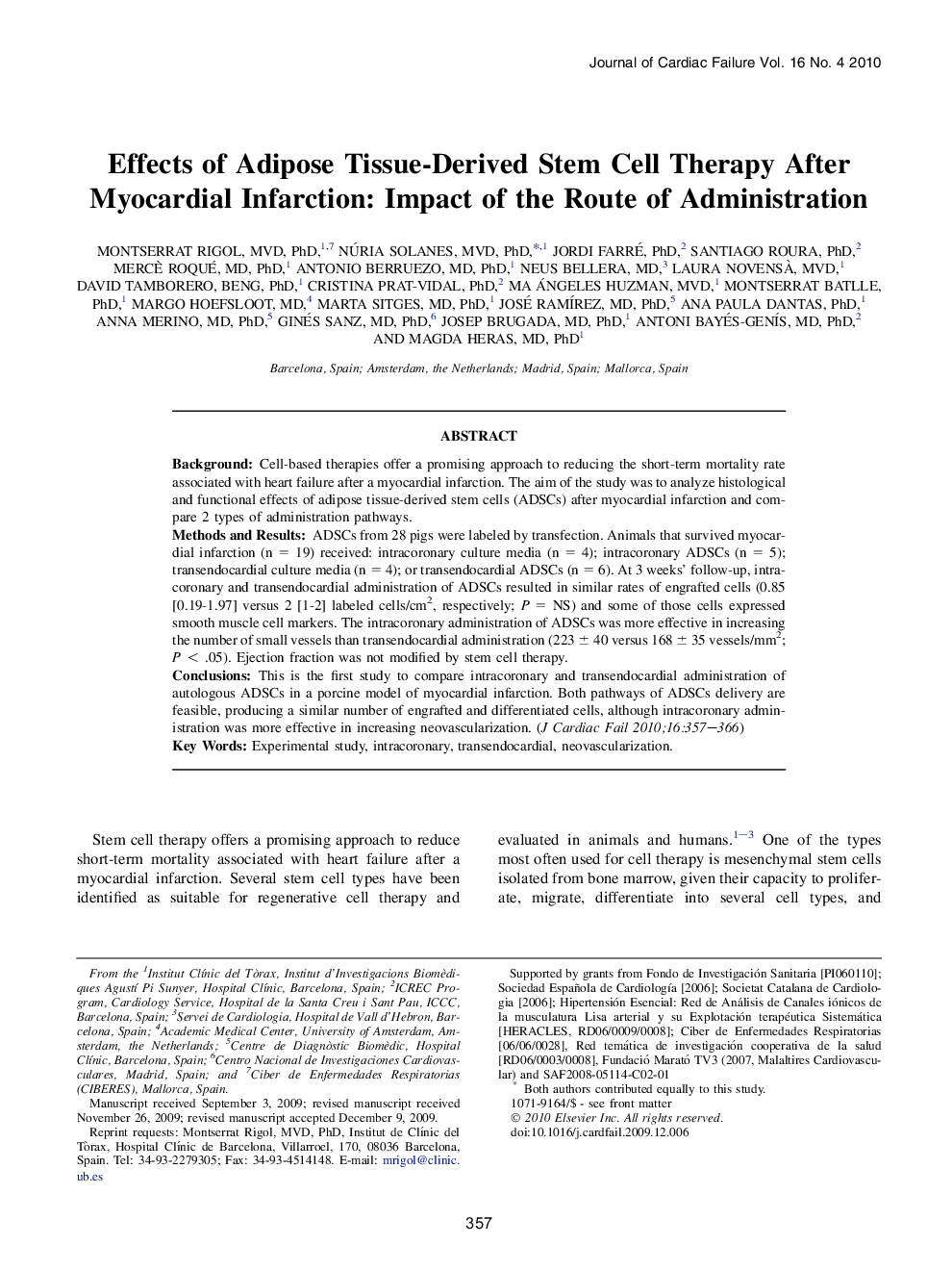| Article ID | Journal | Published Year | Pages | File Type |
|---|---|---|---|---|
| 2961993 | Journal of Cardiac Failure | 2010 | 10 Pages |
BackgroundCell-based therapies offer a promising approach to reducing the short-term mortality rate associated with heart failure after a myocardial infarction. The aim of the study was to analyze histological and functional effects of adipose tissue-derived stem cells (ADSCs) after myocardial infarction and compare 2 types of administration pathways.Methods and ResultsADSCs from 28 pigs were labeled by transfection. Animals that survived myocardial infarction (n = 19) received: intracoronary culture media (n = 4); intracoronary ADSCs (n = 5); transendocardial culture media (n = 4); or transendocardial ADSCs (n = 6). At 3 weeks' follow-up, intracoronary and transendocardial administration of ADSCs resulted in similar rates of engrafted cells (0.85 [0.19-1.97] versus 2 [1-2] labeled cells/cm2, respectively; P = NS) and some of those cells expressed smooth muscle cell markers. The intracoronary administration of ADSCs was more effective in increasing the number of small vessels than transendocardial administration (223 ± 40 versus 168 ± 35 vessels/mm2; P < .05). Ejection fraction was not modified by stem cell therapy.ConclusionsThis is the first study to compare intracoronary and transendocardial administration of autologous ADSCs in a porcine model of myocardial infarction. Both pathways of ADSCs delivery are feasible, producing a similar number of engrafted and differentiated cells, although intracoronary administration was more effective in increasing neovascularization.
